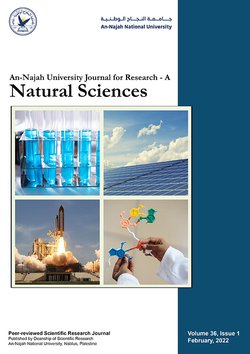Traffic Signal Impacts on Air Pollution and Fuel Consumption in Downtown Nablus City
Authors:
Article info
2003-05-25
2003-12-09
2003-12-09
97 - 114
Keywords
Abstract
Fuel consumption and exhaust emissions are directly related to traffic movement and vehicle speed and acceleration/deceleration. Vehicular traffic in the Palestinian areas consumes approximately 60 percent of the total fuel consumption. Therefore, the continuous growth in the number of vehicles in general and passenger cars in particular will increase fuel consumption and emissions in the area. The objectives of this study are to evaluate the impact of traffic signals and their improvements on traffic movement and delay and to link traffic measures of effectiveness (MOE) with fuel consumption and air pollution in Nablus City downtown area. CORSIM simulation model was used as a tool to estimate traffic and environmental MOE. Studies showed that traffic signal improvements in urban areas could lead to a reduction in fuel consumption and exhaust emissions in percentages ranging from 25 to 65 percent. In this study, traffic signals were improved at study intersections and corridors in downtown Nablus City using optimum cycle length, signal timing, and progression. These improvements resulted in reducing average delays by 3 to 57 percent, fuel consumption by 2 to 25 percent, and carbon oxides air pollution by 2 to 10 percent. The study recommends improving traffic circulation and reducing fuel consumption and emissions using traffic signal improvement plans at the network level in downtown Nablus City. The implementation of traffic systems management, which includes low cost and quick to implement plans, is also recommended to improve traffic and environmental conditions in Palestinian cities.
Al-Sahili, K., & Abu-Eisheh, S. (2003). Traffic Signal Impacts on Air Pollution and Fuel Consumption in Downtown Nablus City. An-Najah University Journal for Research - A (Natural Sciences), 18(1), 97–114. https://doi.org/10.35552/anujr.a.18.1.624
[1]K. Al-Sahili and S. Abu-Eisheh, “Traffic Signal Impacts on Air Pollution and Fuel Consumption in Downtown Nablus City,” An-Najah University Journal for Research - A (Natural Sciences), vol. 18, no. 1, pp. 97–114, Dec. 2003, doi: 10.35552/anujr.a.18.1.624.
Al-Sahili, Khaled, and Sameer Abu-Eisheh. “Traffic Signal Impacts on Air Pollution and Fuel Consumption in Downtown Nablus City.” An-Najah University Journal for Research - A (Natural Sciences), vol. 18, no. 1, Dec. 2003, pp. 97–114. Crossref, https://doi.org/10.35552/anujr.a.18.1.624.
1.Al-Sahili K, Abu-Eisheh S. Traffic Signal Impacts on Air Pollution and Fuel Consumption in Downtown Nablus City. An-Najah University Journal for Research - A (Natural Sciences) [Internet]. 2003 Dec;18(1):97–114. Available from: http://dx.doi.org/10.35552/anujr.a.18.1.624
Al-Sahili, Khaled, and Sameer Abu-Eisheh. “Traffic Signal Impacts on Air Pollution and Fuel Consumption in Downtown Nablus City.” An-Najah University Journal for Research - A (Natural Sciences) 18, no. 1 (December 2003): 97–114. https://doi.org/10.35552/anujr.a.18.1.624.
Traffic Signal Impacts on Air Pollution and Fuel Consumption in Downtown Nablus City
المؤلفون:
معلومات المقال
2003-05-25
2003-12-09
2003-12-09
97 - 114
الكلمات الإفتتاحية
الملخص
Fuel consumption and exhaust emissions are directly related to traffic movement and vehicle speed and acceleration/deceleration. Vehicular traffic in the Palestinian areas consumes approximately 60 percent of the total fuel consumption. Therefore, the continuous growth in the number of vehicles in general and passenger cars in particular will increase fuel consumption and emissions in the area. The objectives of this study are to evaluate the impact of traffic signals and their improvements on traffic movement and delay and to link traffic measures of effectiveness (MOE) with fuel consumption and air pollution in Nablus City downtown area. CORSIM simulation model was used as a tool to estimate traffic and environmental MOE. Studies showed that traffic signal improvements in urban areas could lead to a reduction in fuel consumption and exhaust emissions in percentages ranging from 25 to 65 percent. In this study, traffic signals were improved at study intersections and corridors in downtown Nablus City using optimum cycle length, signal timing, and progression. These improvements resulted in reducing average delays by 3 to 57 percent, fuel consumption by 2 to 25 percent, and carbon oxides air pollution by 2 to 10 percent. The study recommends improving traffic circulation and reducing fuel consumption and emissions using traffic signal improvement plans at the network level in downtown Nablus City. The implementation of traffic systems management, which includes low cost and quick to implement plans, is also recommended to improve traffic and environmental conditions in Palestinian cities.
Al-Sahili, K., & Abu-Eisheh, S. (2003). Traffic Signal Impacts on Air Pollution and Fuel Consumption in Downtown Nablus City. An-Najah University Journal for Research - A (Natural Sciences), 18(1), 97–114. https://doi.org/10.35552/anujr.a.18.1.624
[1]K. Al-Sahili and S. Abu-Eisheh, “Traffic Signal Impacts on Air Pollution and Fuel Consumption in Downtown Nablus City,” An-Najah University Journal for Research - A (Natural Sciences), vol. 18, no. 1, pp. 97–114, Dec. 2003, doi: 10.35552/anujr.a.18.1.624.
Al-Sahili, Khaled, and Sameer Abu-Eisheh. “Traffic Signal Impacts on Air Pollution and Fuel Consumption in Downtown Nablus City.” An-Najah University Journal for Research - A (Natural Sciences), vol. 18, no. 1, Dec. 2003, pp. 97–114. Crossref, https://doi.org/10.35552/anujr.a.18.1.624.
1.Al-Sahili K, Abu-Eisheh S. Traffic Signal Impacts on Air Pollution and Fuel Consumption in Downtown Nablus City. An-Najah University Journal for Research - A (Natural Sciences) [Internet]. 2003 Dec;18(1):97–114. Available from: http://dx.doi.org/10.35552/anujr.a.18.1.624
Al-Sahili, Khaled, and Sameer Abu-Eisheh. “Traffic Signal Impacts on Air Pollution and Fuel Consumption in Downtown Nablus City.” An-Najah University Journal for Research - A (Natural Sciences) 18, no. 1 (December 2003): 97–114. https://doi.org/10.35552/anujr.a.18.1.624.
An-Najah National University
Nablus, Palestine
Nablus, Palestine
- P.O. Box
- 7, 707
- Fax
- (970)(9)2345982
- Tel.
- (970)(9)2345560
- (970)(9)2345113/5/6/7-Ext. 2628
- [email protected]
- EIC
- Prof. Ismail Warad
An-Najah University Journal for Research - A (Natural Sciences) by An-Najah University, Nablus, Palestine is licensed under CC BY-NC 4.0
